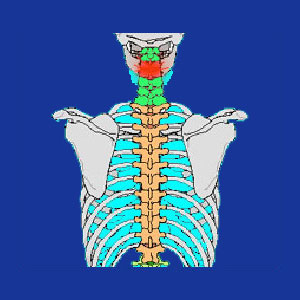
A broken neck is a dreaded diagnosis, which might result from a variety of traumatic injuries. However, the extent of tissue damages ranges greatly, making this condition one of the most variable of all neck injuries. In some cases, the effects of cervical fracture will be minor and even unnoticeable, while in others, there may be horrific consequences that can threaten life itself. The main deciding factors to consider include whether any neurological structures are affected by the fracture and whether the spinal integrity has been compromised by the break.
This essay details broken cervical vertebrae and how these occurrences can affect the structural and neurological functionality of the neck region.
Broken Neck Definition
The term broken refers to a fracture in one or more of the cervical bones, called vertebrae. There are a total of 7 cervical vertebrae which can be injured in the neck. Depending on the extent of damage incurred, one or more of these can be broken in a variety of ways.
The easiest parts of the vertebrae to break are the thin bony fins which project off the rear of the structures. These spinous processes can chip or snap, usually causing pain and inflammation, but rarely influencing nerve function or causing any significant health risks. The sides of the vertebrae are called articular processes and these are also often injured and fractured. Once again, effects are rarely overly significant, but these traumas can enact serious effects in uncommon circumstances. When the actual vertebral body is damaged, the entire spinal bone may become unstable. Luckily, the vertebral body is a solid mass of bone and is difficult to fracture.
It is vital to know that single level broken bones in the neck may be painful, but often do not pose any additional danger. Many fractures do not even require specific treatment, although all should be monitored by a qualified physician. Multiple level fractures, and those which do influence nerve function, are completely different stories and may present real danger to the patient.
Neck Fracture Treatment
Treatment for a fractured cervical vertebra depends on the extent of the injury and the effects it produces. Most minor breaks are allowed to heal on their own, although large or problematic fractures may require closed or open reduction. Sometimes, open surgery is required to stabilize multiple fractured levels or to alleviate compression on sensitive nerve fibers.
Fractures can break onto the spinal nerve roots, or may even compress the spinal cord itself. These are serious matters and should always be handled by a specialist in spinal neurosurgery. In the most extreme cases, spinal nerves may be severed by a fracture. This will usually cause a loss of motor function, autonomic function and/or sensation in the area of the body served by the damaged nerve. These neurological deficits may, or may not, be repairable with surgery.
Likewise, the spinal cord can also be crushed or severed by a fracture, usually resulting in permanent complete or partial paralysis below the affected level. When a complete cervical spinal cord injury occurs, the chances of regaining function are terribly low, despite the most invasive and drastic care practices.
Broken Neck Implications
A broken neck does not imply nerve or cord damage in any way. In fact, most people who break their necks will heal just fine and suffer no lasting neurological consequences. To speed healing of any vertebral bone, physicians usually recommend controlled gentle activity, a proper diet full of calcium and magnesium and targeted physical therapy. Serious fractures, which necessitate surgical reduction, may require more care, to ensure that no postoperative complications will result.
Spinal nerve and spinal cord injuries which result from fractures are a completely different story and require expert evaluation and rehabilitation. In these sad cases, feel and function may or may not be regained, but at least technology now exists to help patients, with even the worst neurological traumas, to live full lives.
Neck Pain > Neck Injury > Broken Neck





